
Contemplating 5G’s Impact on the Education Sector
If there was any good to come out of the COVID-10 pandemic, it was the light-bulb realization that 5G technology will stand to revolutionalize the way we work, play, socialize, and even learn.
Here is what you need to know about the latest and greatest version of the internet and how it will cause a huge and much-needed paradigm shift in the education sector.
Enhanced In-Class Learning
With ever-growing expectations for both students and educators, teachers are always looking for ways to maximize learning time. And while the typical 4G-operated school has enough connective strength to satisfy basic online functions and provide a fair share of digital applications throughout the school day, so much time is lost to poor wireless access. Fortunately, a 5G connection moves 100 times faster, a performance that permanently removes latency and makes buffering a bother of the past. This means faster download times and fewer classroom malfunctions all around.
Greater Developments in Virtual and Augmented Reality
It was once widely assumed that the classroom experience could never be replaced by virtual means. That was until 5G-powered VI and AI advancements began to make their mark and relieve many of the educational burdens that hinder the learning experience. One of the main differences that make these innovations superior to the ones fueled by 4G connections is the overall seamless application that removes lagging and extended loading times, ultimately creating a more realistic feel. Also, with greater connective strength to work with, more effective, engaging, and powerful applications can be brought to life.
With the use of virtual and augmented reality, educators can provide both hands-on and in-depth training that can effectively train mechanics, doctors, and especially college and school-aged students. For example, Froggipedia is an AR app developed to make biology class a lot easier and more interactive by walking students through a virtual frog dissection. While being guided through a detailed segment broken down into level-friendly segments, students will remain engaged as they learn about the frog’s internal organs, how those organs function, and how they develop from a mere egg to adulthood.
Massive Gains in Rural Areas
It is no secret that education is inaccessible in many areas of the world. In fact, this massive divide has created a huge gap in educational value in rural areas versus their urban and suburban counterparts. The convenience and affordability of 5G connection provide lasting solutions to equal out learning opportunities for those who have been left behind due to poverty and travel difficulties.
The growing teacher shortage in rural areas is a key thing to look at when it comes to the lack of quality education. With limited instructional hands on deck, these populations are in desperate need of resources to fill the gap and remain up to speed with the more advanced parts of the world. Not to fret, though, as 5G the network has answers for that issue as well. With a greater connection and a stronger reach outward, teachers can reach out to other educators when they require resources or a helping hand.
Also, hybrid learning has been and will continue to be monumental in the gap-solving process. Hybrid, or “blended” learning allows students to learn from a distance in a way that mimics an in-class experience. This style of learning makes it possible for impoverished students to stay educated despite any travel barriers that might keep them from being able to attend in-person courses.
Education From Anywhere
In today’s busy world, having the option to learn on the go is less of a luxury and more of a necessity. This is another invaluable benefit of the worldwide adoption of 5G as time has shown that personal hotspots and public Wifi connections often fall short when it truly counts.
Technology will continue to take off, making way for the next breed of learners, trailblazers, and educational innovators. It’s officially time to gear up for the inevitable 5G future.
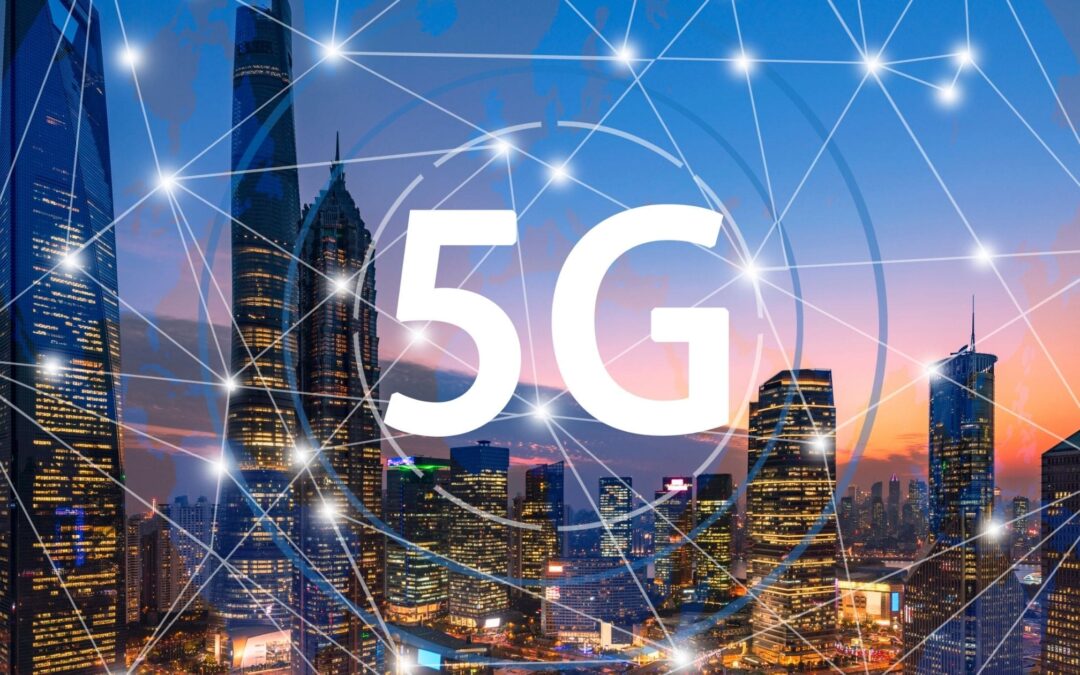
How 5G Can Revolutionize The Way We Do Business
As the long, laborious rollout of 5G continues across the U.S., business leaders are contemplating what that might mean. And the expectation is that it will have wide-ranging implications across all sectors. Manufacturing, enabled by all manner of Internet of Things gadgetry, will become more efficient. Healthcare will become more accessible. Operations will improve, no matter the field; waste will be minimized and stakeholders of every stripe will benefit.
Feel free to wonder when it will be widely available. While Verizon continues to lead the other major carriers – AT&T and T-Mobile/Sprint – in the rollout race, Statista reported in mid-November 2022 that 5G was available in 296 U.S. cities, second-most in the world to China (356). But the expectation is that there will be 70 billion connected devices in the world by 2025, many of them powering businesses as they hurtle toward what has been called the Fourth Industrial Revolution, or Industry 4.0.
Fortune Business Insights projects that the global industry 4.0 market, valued at $101.69 billion in 2020, will mushroom to $337.1 billion by 2028. Information Age reporter Andrew Ross wrote in July 2022 that much of that growth will be due to smart manufacturing, and notes that the National Institute of Standards and Technology (NIST) defines that as “fully-integrated, collaborative manufacturing systems that respond in real time to meet changing demands and conditions in the factory, in the supply network, and in customer needs.”
Further, Ross wrote that 5G will have a “unique” impact on industry, as it will “enable new operating models” and afford companies the opportunity to “build smart factories that can take advantage of the emerging tech that’s changing the industry.”
Andreas Muller, head of communication and network technology in the corporate sector for research and advance engineering at the German multinational engineering and technology company Robert Bosch GmbH, dug down even further in a piece on that firm’s website. He pointed out that 5G’s speed (20 times faster than 4G), low latency (one millisecond) and reliability (99.999 percent) open up all sorts of possibilities.
One aspect he emphasized was the ability of 5G to streamline production through the use of mobile operating panels and data glasses, and how autonomous vehicles could help resolve supply chain issues.
It is likely that healthcare will be impacted more dramatically than any other sector by 5G’s emergence – and not a moment too soon, given population growth and a looming physician shortage. We already saw during the height of the pandemic how much of a difference technology can make in this space, as telehealth assumed a key role (and will continue to have one, given the fact that 40 percent of those responding to a 2021 McKinsey poll indicated they will still use it.)
The implementation of 5G in healthcare will, according to a recent Business Insider piece, enable clinicians to better manage their time while reducing the waste of supplies (especially of critical medications) and equipment. And that will, in turn, lead to better care and better outcomes.
An example offered in the BI piece was that of a hospital in London that makes use of smart devices and monitoring systems, as well as AR/VR headsets that enable clinicians to collaborate more effectively on particularly challenging cases. In addition, AI-powered heat mapping allows patients to be tracked as they move about the facility.
The conclusion that can be drawn, then, is that while 5G penetration will help all of us as we go about our daily lives, its impact will be much more far-reaching. It will change lives. It might even save some. The possibilities are almost limitless.
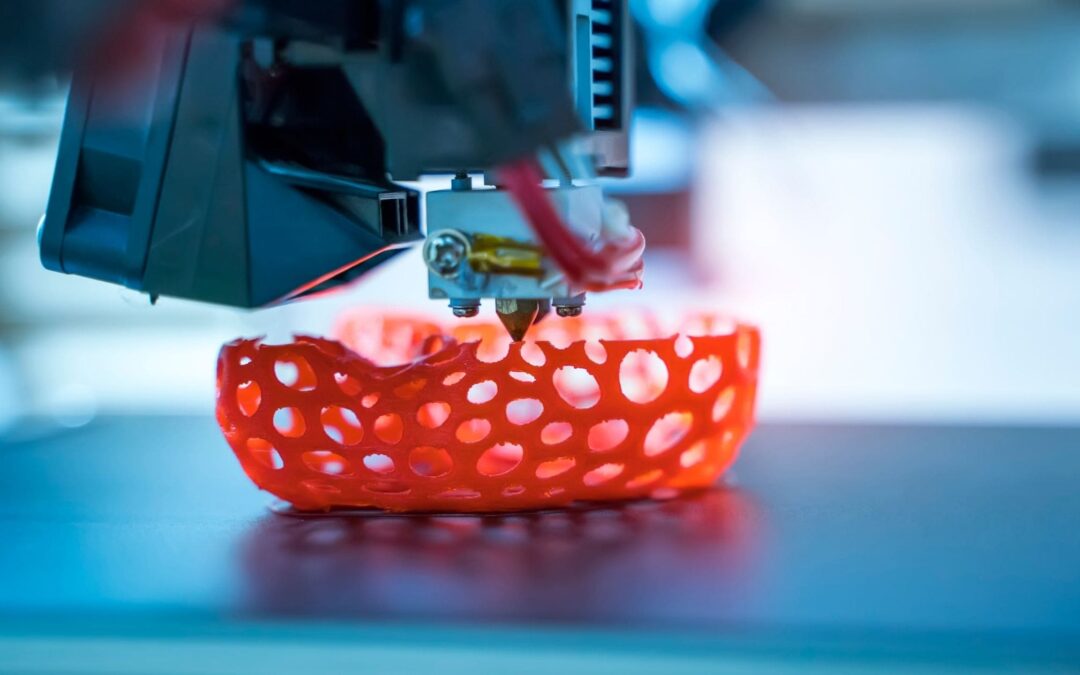
3D Printing Has Become a Sporting Proposition
These days, it’s all about the steps – about counting how many one has taken in any given day, via one device or another. Have I reached the exalted threshold of 10,000? Or must I get myself off the couch and trudge around the block? More to the point, have I gone far enough to justify seconds on dessert?
All pertinent questions, and all questions many of us are asking ourselves, now that the wearables have become all the rage. Whether it’s a FitBit or smart watch or some other gadget, some 57 million Americans have taken to wearing devices that track not only their exercise rate but also their vital signs, sleep patterns or caloric intake. It is estimated that the wearable market is currently an industry worth between $25 billion and $33 billion annually, and one that will soar past $63 billion by 2027.
Such is Americans’ obsession with wearables, in fact, that some experts worry that it could lead to mental-health issues – that folks will equate their step count to their self-worth. But in a society that has grown too sedentary, too obese and too prone to chronic conditions like heart disease, cancer and diabetes, every step (whether literal or figurative) would appear to be a positive one.
As Johns Hopkins Medicine cardiologist Seth Martin said on that organization’s website:
“Fitness trackers are a great tool for heart health. Being more active and changing your habits is important, but it can be difficult. Tracking likely helps a lot of people when combined with a clear goal to shoot for.”
Given the popularity of such gadgetry, it should come as no surprise that innovation in the field is ongoing; everybody, it seems, wants to be on the cutting edge. Nor should it be a surprise that 3D printing is playing an increased role in this sector.
Consider the development in 2011 by a team from the University of Arizona’s School of Engineering of a health monitor that never needs to be recharged. This device, labeled “a completely new concept” by Arizona professor Philipp Gutruf, features 3D-printed mesh that can be fitted to different body parts, and which requires no adhesives. Moreover, it is embedded with miniature sensors that enable it to track different biometrics, and draws its power from radio signals – known as “far-field” energy harnessing, according to a UA news release.
Also notable were the developments at two Korean universities of biosensors that use 3D-printed frameworks – one made of a polyvinylidene fluoride (PVDF)/barium titanate (BTO) composite, the other of a sugar scaffold (eventually dissolved) which was injected with a silicone elastomer filler. The first of these sensors was piezoelectric, meaning that it draws its energy from applied stress. One example was when it was fitted into a taekwondo belt, which is constantly subjected to the blows of the competitors in that martial art.
Certainly 3D printers come into play in other aspects of sports, as when it is used to customize equipment that protects athletes from injury and leads to improved performance. Moreover, it has been found that such items reduce the industry’s carbon footprint and enable increased participation by disabled competitors.
But the greatest impact of all is in the day-to-day use of fitness trackers. Everyone seems to have one, and everyone stands to benefit. And those produced by 3D printers seem to have as much promise as any given their durability, flexibility and user friendliness.

5G: It’s NOT Just About the Smartphone Anymore
The 5G rollout is ongoing, but the full implications of that are not yet clear. While experts believe it will hasten the fourth Industrial Revolution, as well as the widespread use of autonomous vehicles and the emergence of smart cities, those developments are still to come.
The more immediate impact will be felt on our smartphones, and to that end several 5G phones have been produced in recent years, and, which is more, they are coming down in price, owing to the fact that semiconductors have grown less expensive than in the recent past. 5G’s speed – it is up to 100 times faster than 4G – will in time combine with its reduced latency to make for better gaming, an enhanced video experience and more innovative apps.
Other 5G consumer devices that have begun to emerge are wireless routers, notably those produced by Samsung in collaboration with Verizon Communications. They will make it possible to have a broadband connection in one’s home, and accelerate the trend toward cord-cutting.
Also increasingly available are 5G laptops, like the ones developed by Lenovo and Samsung.
Further developments no doubt lie ahead, as 5G coverage improves. While the three major U.S. wireless providers – AT&T, Verizon and T-Mobile – all claim they provide nationwide coverage, the truth is somewhat more nuanced.
As of December 2021, 49.2 percent of Americans with 5G devices were connected to the network most of the time, according to analysis by the network testing company Ookla. That’s the best percentage in the world, ahead of The Netherlands (45.1) and South Korea (43.8).
Ookla concluded, however, that in terms of speed the U.S. lagged behind 10 other nations that were early adopters of 5G, at 93.73 megabits per second (mbps). The leaders in that category were South Korea (492), Norway (427) and the United Arab Emirates (410).
The conclusion that can be reached, then, is that not all 5G is created equal – that while T-Mobile continues to provide greater coverage than that of its two rivals, closer examination is required.
As noted on the website CNet.com, there are different versions of 5G – millimeter-wave (mmWave), which offers greater speed but less reliable coverage than other types; low band, which is slower but more reliable; and midband (C-Band), which is faster than low band but more reliable than mmWave.
To date T-Mobile covers 41 percent of the U.S., while AT&T covers 18 percent and Verizon 11 percent. T-Mobile’s coverage is largely of the midband variety, while the other two companies offer low band, with promises of upgrades to midband this year, after investing some $68.8 billion in it during the FCC’s auction in late 2021.
As 5G continues to evolve in the U.S., so too will the consumer market. More devices will be developed, devices that will, for example, allow people to more fully explore things like augmented reality, virtual reality and 3D video experiences. In short, 5G looms as a game-changer, but we’re still in the very early stages of the game. Things have yet to play out fully.
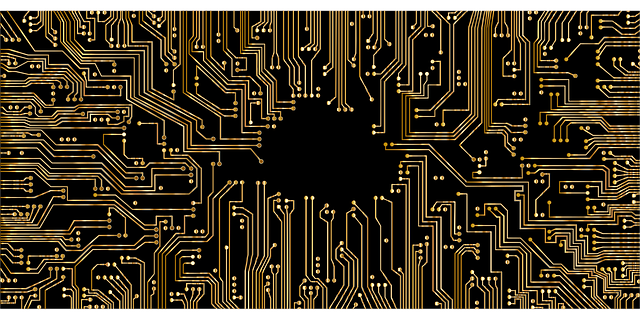
The Dawning of the Age of Transparent Electronics Draws Nearer
Picture a world in which your car’s speedometer appears not on the dashboard, but rather on the inside of the windshield. A world in which smart windows adjust their transparency according to the environment. A world in which advanced wearables measure not just data like body temperature and pulse rate but also hormone levels.
That’s the world we are fast approaching, given developments in the field of transparent electronics.
A research team from Australia’s Royal Melbourne Institute of Technology (RMIT) issued a report in April 2021 about a breakthrough in the two-dimensional semiconductor space, and that is expected to make all of this possible, as well as things like transparent solar panels and optical coatings. (An aside about the latter: The hope is that whatever eyewear comes of this, it advances beyond the Google Glass, which created a buzz in the early 2010s but was phased out just a few years later, largely because of privacy concerns.)
Certainly the potential of transparent electronics has attracted the attention of the tech giants, as well as investors. Samsung, Apple, 3M and Cambrios Technology are among those making inroads in the field, and the market for these devices, which stood at a shade over $996 million in 2019, is expected to balloon to $3.8 billion by 2025. That’s an impressive compound annual growth rate of 25 percent, and it’s not expected to slow anytime soon. By 2041, in fact, the market is expected to reach $20 billion.
The RMIT team developed ultrathin beta-tellurite, a high-mobility p-type oxide that according to team leader Dr. Torben Daeneke “fills a crucial gap in the materials spectrum to enable fast, transparent circuits.”
As explained in the report, p-type semiconducting materials are characterized by positively charged electrons, n-type materials by those that are negatively charged, and stacking them atop one another allows electronic devices to function. The issue, however, is that researchers have not been able to find many p-type oxides over the years.
Daeneke’s team built on previous research showing that tellurium could behave as both a metal and non-metal. They were able to synthesize beta-tellurite, then spread a molten layer — one that was just 1.5 nanometers thick — over a surface. Testing showed that it was anywhere between 10 and 100 times faster than any p-type semiconductors that had been previously developed.
The RMIT team built in part upon the work of a team at Saudi Arabia’s King Abdullah University of Science and Technology, which in 2018 developed nanowires so thin that they were transparent. Atif Shamim, Associate Professor of Electrical and Computer Engineering (ECE) and Principal Investigator of the Integrated Microwave Packaging Antennas and Circuits Technology (IMPACT) lab, told the website Phys.org that the idea came to him when he saw his newborn son in an incubator within a maternity ward: How can infants be protected from radiation in such a room, the elder Shamim wondered, while still being visible to their loved ones?
His team’s work revealed a potential answer to that question, and now the RMIT team has gone one step further. So too has the technology as a whole.

Predicting Natural Disasters With Your Smartphone
As of April 2021, there were an estimated 3.8 billion smartphone users in the world, or nearly half the global population of 7.8 billion. That has implications not only for communication and entertainment, but also safety.
That has been shown during the coronavirus pandemic, as nations like Germany and Ireland have used contact tracing apps to great effect. (That is not true in the U.S., however. Such apps have largely gone unused, in no small part because of privacy concerns.)
Still, smartphone apps have shown potential to keep users safe in other ways, one being in their ability to predict natural disasters. Such events as earthquakes, tsunamis, hurricanes, floods, wildfires, heatwaves, and droughts kill an average of 60,000 people a year. Scientists, as a result, have been extremely interested in developing mechanisms that not only prevent these disasters but also keep humankind at arm’s length from potential negative effects.
Smartphones come with integrated and highly precise sensor technology designed to assess environmental conditions like humidity, temperature, and even ground vibrations. For meteorologists to make sense of such data, they need a huge volume of this information.
Thanks to the Internet of Things (IoT) and blockchain, engineers can collect a treasure trove of data; scientists can consequently use this data to make accurate predictions on prospected weather patterns. This technology can prove crucial in helping predict the potential occurrence of heavy rains and flash floods within an area, for example.
The good thing with such data is that it is accurate and available at a moment’s notice. Smartphones come equipped with GPS technology which can help such meteorologists to determine the particular area affected accurately.
An additional convenience offered by smartphones is their ability to disseminate information as accurately, precisely, and timely as possible. In case, for instance, meteorologists accurately predict the occurrence of natural disasters within an area, they can immediately disseminate cautionary information to the residents, warning them of impending floods, heatwaves, fires, or even hurricanes. Such information is crucial in helping to reduce and manage the adverse effects of natural disasters.
The benefits that smartphones provide in the entire weather industry are further enhanced by the fact that these devices can remotely transmit data through satellites. Thanks to blockchain technology, the data can be instantly processed and even reliably used to make predictions through artificial intelligence and machine learning. The observed weather patterns can be compared to previous occurrences to predict impending disasters accurately.
For instance, if the data shows characteristic patterns in temperatures, atmospheric tides, and atmospheric pressure, then this information can be used to predict the occurrence of hurricanes. The consistent relaying of smartphone data thereafter can be used to determine the prospected path of such a developing hurricane, thereby offering advance cautionary information to the public.
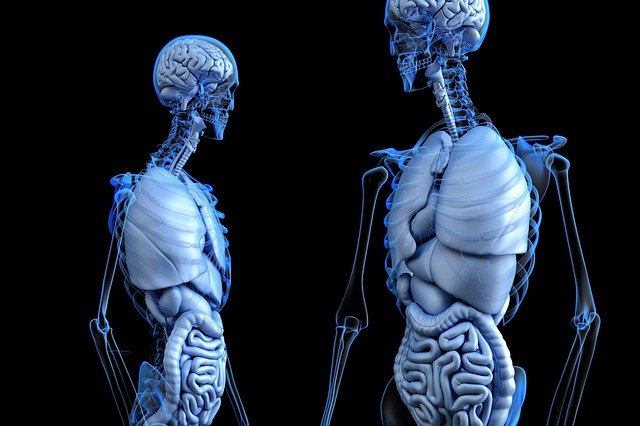
The Growing Reality of Transplantable Organs via 3D Bioprinting
The announcement on Jan. 27, 2021 that two companies, 3D Systems and United Therapeutics Corporation, had successfully bioprinted lungs — organs that, significantly, had vascular structures capable of sustaining them — represented the latest breakthrough in a burgeoning field, and another step toward the day when transplantable 3D organs become a reality.
The companies’ development involved 3D printing vascularized hydrogel scaffolding that can be suffused with living cells, which in turn will create tissue. Dr. Jeffrey Graves, 3D Systems’ president/CEO called the development “absolutely remarkable” in a news release, and his company plans to ramp up development of bioprinting solutions.
Another recent development in this sector saw researchers at Carnegie Mellon University employ a 3D printer to create a model of the human heart. The material that was used in this process, according to a Jan. 7 report on Medical Expo E-Mag, was extracted from seaweed.
Adam Feinberg, a professor of biomedical engineering and materials science at Carnegie Mellon, told Medical Expo that bioprinting a transplantable heart is “decades off,” but added that parts of that organ, like valves and sections of the ventricle, should be available “much sooner and have a major impact in that way in a matter of years.”
Advances like these have become commonplace throughout the medical field in the wake of the coronavirus pandemic, which has presented new challenges and demanded innovative answers. But beyond that is the grim reality that there was a crying need for organ transplants, even before the outbreak. Over 108,000 U.S. patients were on waiting lists as of the end of January, according to the United Network for Organ Sharing, and 20 people die every day for lack of a transplant.
But the aforementioned breakthroughs offer hope, as did such 2019 developments as the 3D printing of a rabbit-sized heart in Israel and a pancreas in Poland. There is every expectation that the momentum will be maintained, as indicated by predictions that the 3D bioprinting market size — which encompasses not just organ printing, but that of ventilators, COVID-19 test kits, etc. — will exceed $9.9 billion in 2026, up from $8.3 billion in 2020. That’s a compound annual growth rate (CAGR) of nearly 19 percent.
Two of the bigger challenges of creating transplantable 3D organs are differentiation (i.e., ensuring that a patient’s body accepts such organs) and, as mentioned earlier, vascularization. Researchers believe that the first issue can be solved by using the patient’s own stem cells to build a new organ, though Robby Bowles, a bioengineer at the University of Utah, told The Scientist that it’s not that simple — that it’s a matter of “coming together and producing complex patternings of cells and biomaterials together to produce different functions of the different tissues and organs.”
Research is ongoing in that realm, and developments like the one by 3D Systems/United Therapeutics make clear that vascularization is possible. As Courtney Gegg, a senior director of tissue engineering at Prellis Biologics, told The Scientist, a blood supply is vital to organs’ survival.
“It can’t just be this huge chunk of tissue,” she said.
That hurdle, at least, has been crossed, the latest sign of progress in a promising field. These latest developments show that the 3D bioprinting of transplantable organs will one day become a reality.
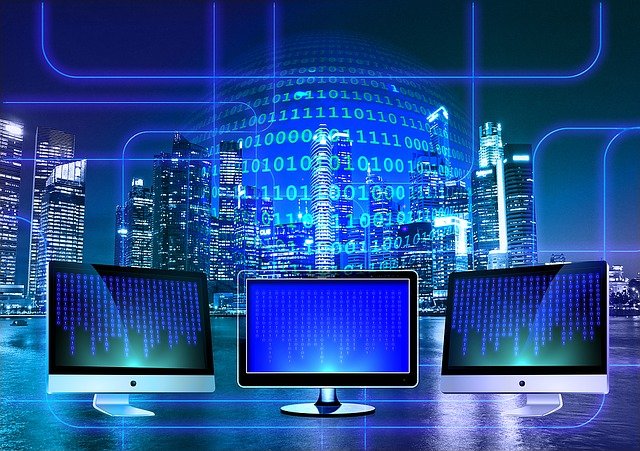
How Graphene is Hastening the Rise of Quantum Computing
Quantum computing has long been regarded as the next “big thing.” Now it’s looming ever larger on the horizon, and graphene is part of the reason for that.
Dr. Rajamani Vijayaraghavan, head of the Quantum Measurement and Control Laboratory at the Tata Institute of Fundamental Research (TIFR), told Swarajya Magazine in September 2020 that an everyday quantum computer — i.e., one “that is practical and commercial in nature,” as he put it — is still a “couple of years” down the road.
But there have been strides in that direction for several years, and experts relish all that these computers might have to offer. So grand is their processing power, in fact, that it is believed they will be able to meet some of the world’s greatest challenges in a fraction of the time it takes classical computers. They can hasten the development of environmentally friendly technology, for instance. They can shorten the timeline for the development of drugs and vaccines. They can make market forecasting more sophisticated and supply chains more efficient.
The caveat is that the quantum bit (i.e., the qubit), the basic building block of quantum computers, is notoriously sensitive to its environment. In fact, until last year they always had to be supercooled at minus-272 degrees C (1 kelvin). They simply could not operate at higher temperatures.
This is one of the places graphene could come into play. Researchers, already aware of the substance’s superconductivity, discovered in 2020 that graphene was the first material capable of serving simultaneously as a superconductor, insulator and ferromagnet. That resulted in the further revelation, in February 2021, that when three layers of graphene were twisted — one more layer than had previously been attempted — the material’s conductivity was enhanced to the point that scientists could envision them operating at room temperature.
Also in February 2021 came a further development in the field of valleytronics, which seeks to exploit a property in graphene known as “the valley,” which is not unlike the spin of electrons in other materials. This new method again involves twisting layers of graphene — this time two, instead of three — after they are placed between a ferromagnetic insulator. It is expected that this method will increase processing speeds.
A few months earlier, in October 2020, scientists discovered that a bolometer, a device that detects the tiniest of energy changes in quantum computers — changes that can negatively impact qubits — operated far more quickly and efficiently when it was made of graphene as opposed to gold palladium alloy, as had previously been the case.
Taken together, these developments indicate that we are drawing ever nearer to seeing quantum computers become a reality. While experts caution that there are “many, many hurdles yet to overcome,” these are promising strides in the right direction.
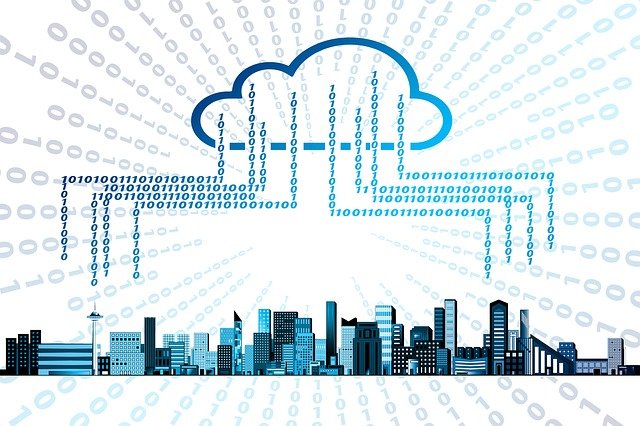
Cloud Storage: What It Is, Why it Helps and How It’s Secured
Whether we realize it or not, we are constantly impacted by cloud storage. Perhaps you begin your work day by opening a Google Doc or an email sent to you via Gmail. Both of those platforms are dependent upon cloud storage. Or perhaps you spend your lunch hour checking Facebook, Instagram or YouTube. All those platforms make use of it as well.
It’s all around us, whether we’re downloading cat videos or toiling away on a big project, and impacts us most directly when we want to back up or store our own personal data — as will increasingly be the case. Spurred by the advent of such cloud-storage systems as Google One, Amazon Cloud and OneDrive, the cloud storage market size is expected to be $49.13 billion in 2021, then jump to $297.54 billion by 2028, a CAGR of 25.3 percent.
Cloud storage is particularly popular in the business world, as some 85 percent of enterprises around the world use it.
But what is it, really?
It consists not of storage in some mystical place free of Earth’s bounds (as its name might suggest), but in far-off data centers, where files of all sizes are secured and backed up but also constantly accessible to owners via the Internet. In fact, users — who pay for the service either via subscription or on a per-consumption basis — can access their information courtesy of any device.
It is, in other words, a sizable step beyond storing information on thumb drives or external hard drives. It has also been particularly useful during the coronavirus pandemic, given many companies’ pivot to remote work. Files can be shared, and it is possible for multiple users to access a file at the same time. In other words, collaborative projects are a breeze when cloud storage is involved.
Security is, of course, a constant concern, especially given how much data is going to be out there in the years to come. While there were some 33 zettabytes of data (the equivalent of 33 trillion gigabytes) throughout the world in 2017, that total is expected to mushroom to 175 zettabytes in 2025. And rest assured that cybercriminals are always lurking.
The countermeasures adopted by cloud servers are considerable. Most take steps such as encrypting files, storing them behind firewalls, and availing users of two-factor authentication. Some even resort to artificial intelligence to scan their system for weak spots.
In addition, most services make multiple copies of files and store them at various data centers — a practice known as redundancy — to preclude their loss in a natural disaster. A 2019 report even noted that there are occasions where these services back up data on magnetic tape, often considered a relic of a bygone era but actually a reliable, secure means of storage.
The long and short of it is that we continue to be enveloped by the cloud. It is all around us, at all times, and enables us not only to store an ever-increasing amount of data, but also to access and share it. All of that is valuable — particularly the latter, and particularly now.
